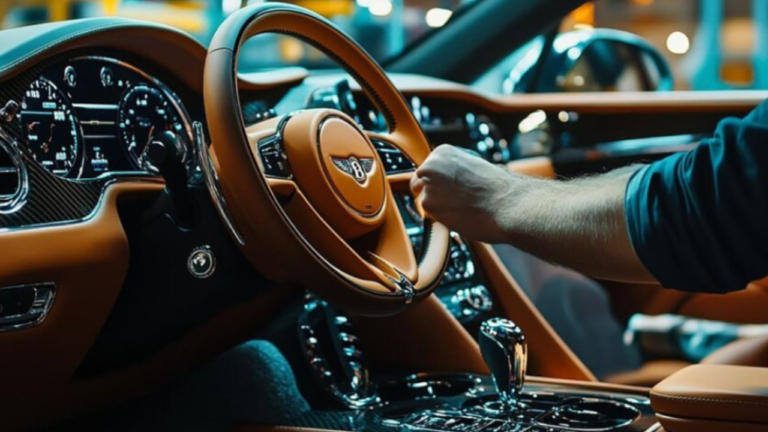Driving is a skill that requires both focus and knowledge. When you look at the gear shifter of an automatic car, you’ll often notice letters like P, R, N, D, and sometimes more, like S or L. For those who are new to driving, these letters can be confusing. The term “PRNDOT” is often used to represent this arrangement of gear positions in automatic transmissions. Understanding how to use each position is key to mastering the basics of car control.
This article will break down each component of PRNDOT in simple, easy-to-understand terms, ensuring you’re confident in your driving skills. Whether you’re a new driver or simply need a refresher, this guide will clarify how these settings work and how they affect the vehicle’s performance.
What is PRNDOT?
PRNDOT refers to the gear selection system in an automatic transmission vehicle. These letters stand for the various driving modes available in most automatic cars, with each letter representing a specific gear. Here’s what each one means:
- P: Park
- R: Reverse
- N: Neutral
- D: Drive
- O: Overdrive
- T: Transmission or other gear modes like Sport or Low.
Understanding the purpose of each gear is crucial for controlling your vehicle efficiently and safely. Most of us only use a couple of these settings, but knowing when to shift between each one ensures that you get the most out of your car’s transmission system. Let’s dive into what each letter stands for and how it impacts your driving.
P – Park: What It Means and When to Use It
When you shift into P (Park), it locks the transmission and prevents the wheels from moving. It’s the gear you should use when the vehicle is stationary and you’re about to exit the car. Essentially, Park is like a parking brake for your transmission.
When to Use Park:
- Always use Park when you’re parking your car, especially on a flat surface.
- For additional safety, engage the parking brake, especially on hills.
Safety Tip: Avoid shifting into Park while the car is still moving, as it can damage the transmission. Also, if you’re stopping briefly at a traffic light or in traffic, leave the car in Drive rather than switching to Park.
R – Reverse: Mastering the Art of Moving Backward
R (Reverse) is used to drive the car backward. When you select Reverse, the car’s transmission gears shift to enable backward movement.
Safe Use of Reverse Gear:
- Always check your mirrors and surroundings before using Reverse.
- Drive slowly while in Reverse, as sudden movements can make the car harder to control.
Common Mistakes: Never shift to Reverse while the car is moving forward. This can severely damage the transmission. Ensure the car has come to a complete stop before shifting.
N – Neutral: What Neutral Really Does
N (Neutral) disengages the engine from the wheels, meaning the car can roll freely without any power from the engine. It’s commonly used in situations where the vehicle needs to be towed or pushed.
When to Use Neutral:
- While towing the vehicle.
- At car washes that require the wheels to roll freely.
Risks of Misusing Neutral: Using Neutral while driving can be dangerous. It limits your control over the vehicle because you can’t accelerate, and shifting back into Drive while moving can cause a sudden jolt that could harm the transmission.
D – Drive: The Default Setting for Forward Motion
D (Drive) is the most used gear, designed for forward motion. It automatically shifts through the available gears as you accelerate and decelerate, making it the default choice for most driving conditions.
How Drive Works: The transmission shifts between gears based on speed and load, providing smooth transitions.
Differences in D Modes:
- Some cars have options like D1, D2, or D3. These are lower gears that limit the automatic shifting to help the car in specific situations like towing or driving up steep inclines.
O – Overdrive: Boosting Efficiency on the Highway
Overdrive (O) is designed for higher speeds, typically on highways. It allows the vehicle to maintain lower engine RPMs while traveling at high speeds, which improves fuel efficiency.
How Overdrive Affects Fuel Efficiency:
- By keeping the RPMs low, Overdrive conserves fuel, reducing the strain on the engine.
When to Activate Overdrive:
- Use Overdrive on highways and open roads. In city driving, it’s usually better to turn Overdrive off for quicker acceleration.
T – Transmission Control (L or S Mode)
Some vehicles offer Transmission Control modes, such as Low (L) or Sport (S). These modes give you more control over how the car shifts gears.
Low (L) mode is ideal for towing or driving downhill, as it keeps the car in lower gears, providing more torque and braking power. Sport (S) mode, on the other hand, enhances performance by allowing the engine to rev higher before shifting.
Best Situations for T Mode:
- Use L mode for steep hills and towing.
- Engage S mode when you want a more responsive, dynamic driving experience.
OT or Other Options: Additional Gears and Their Use
In some vehicles, you might find additional options such as S (Sport), L (Low), or even M (Manual), depending on the car’s make and model. These additional gears are designed for specific driving conditions.
When and Why to Use These:
- S: Use Sport mode for more control and better performance.
- L: Engage Low when navigating steep descents or when extra torque is needed.
How PRNDOT Impacts Fuel Efficiency
Using the right gear at the right time can help you save fuel. For instance, D is designed to give you the best balance between speed and fuel consumption, while O is perfect for highway driving to maximize efficiency. Sport mode or Low gear can be less efficient but are essential for handling tough driving conditions like steep inclines or heavy towing.
Common Mistakes Drivers Make with PRNDOT
- Shifting to Park while the vehicle is still moving, which can damage the transmission.
- Misusing Neutral while driving, which limits control over the car.
- Failing to turn off Overdrive during city driving can reduce fuel efficiency.
- Ignoring the importance of using Low or Sport mode in challenging driving conditions.
Safety Considerations for Using PRNDOT Correctly
Ensure you’re using the correct gear for your driving conditions. For instance, always use Park when stopping on an incline and engage the handbrake to avoid rolling. Also, familiarize yourself with the gears in your car to avoid sudden shifts that can damage the transmission.
PRNDOT in Modern Vehicles
With advancements in technology, many cars now come with semi-automatic or even fully automatic gear systems that are smarter and more fuel-efficient. Some modern vehicles even feature gearless driving modes like CVT (Continuously Variable Transmission), which eliminate the need for traditional gear shifting.
Troubleshooting Gear Problems
If you notice difficulty shifting gears, odd noises, or if the car refuses to move when in D, it might be time to consult a mechanic. Sticking gears or delays in shifting can be early signs of transmission trouble.
Learning to Shift Gears Smoothly
To ensure smooth gear transitions, avoid sudden shifts, and don’t force the car into gears it isn’t ready for. Smooth shifting helps prolong the life of your car’s transmission and provides a more comfortable driving experience.
Conclusion
Understanding the PRNDOT system is essential for every driver. It ensures that you’re using the right gear for the situation, helping improve both safety and fuel efficiency. From mastering Reverse to knowing when to switch to Overdrive, this knowledge can make you a more confident and efficient driver.
FAQs
- Can I shift to Neutral while driving?
- It’s not recommended. Shifting to Neutral while driving can reduce control and is unsafe in most situations.
- When should I use Overdrive?
- Use Overdrive when driving at high speeds on highways for better fuel efficiency.
- What happens if I shift into Park while moving?
- It can damage your transmission. Always stop completely before shifting to Park.
- Is Sport mode bad for fuel efficiency?
- Yes, Sport mode generally uses more fuel since it keeps the engine revving at higher RPMs.
- What does the L gear stand for?
- L stands for Low, and it’s best used in situations requiring more engine power, like towing or driving downhill.

